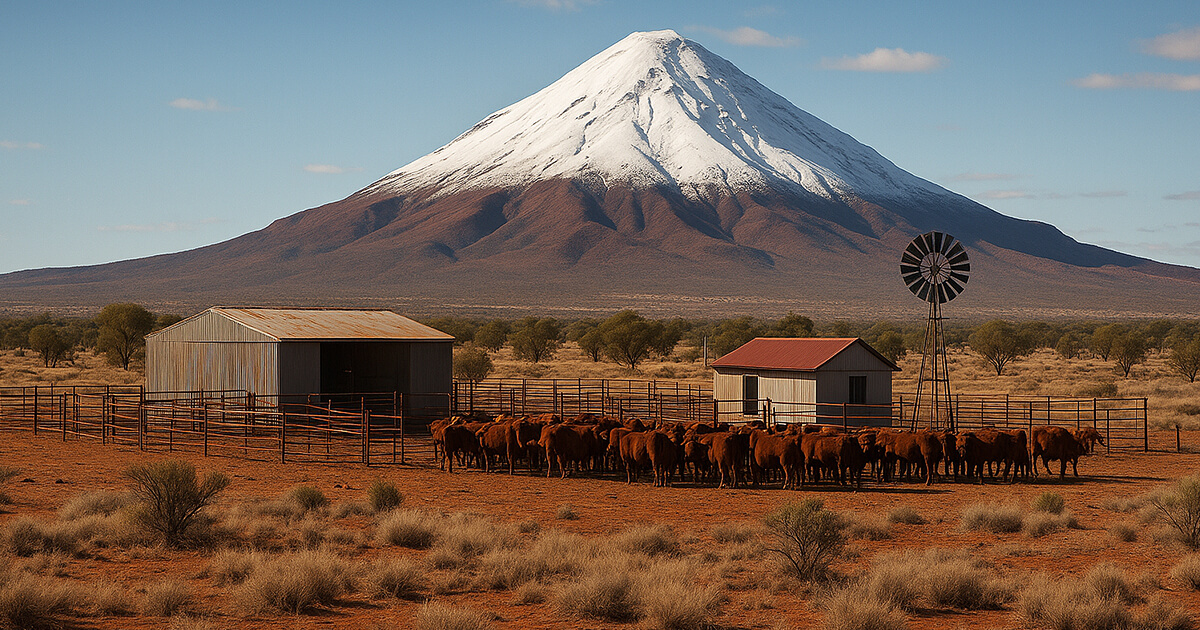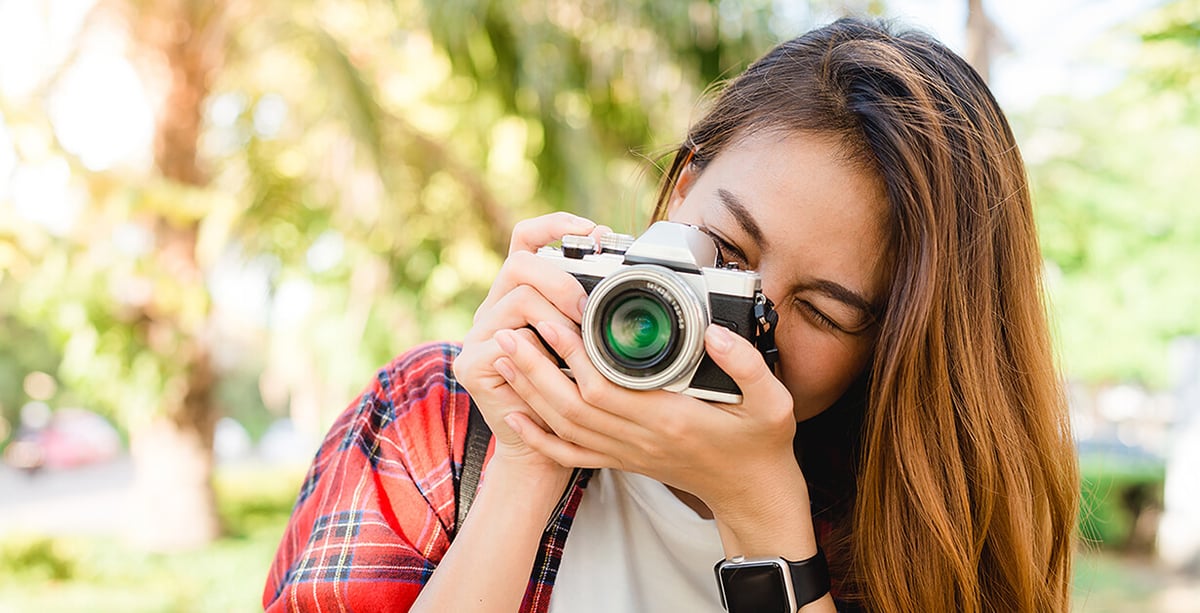The images you select for your website can significantly influence how users perceive your business and its overall brand. They affect the page's overall look and feel. Additionally, the human brain processes images more quickly than text, so selecting pictures wisely is crucial to establishing brand authority and trust.
"The human brain processes images around 60,000 times faster than text"
3M Corporation
It can be challenging to determine what makes a photo appropriate for your website or source images that will have the desired effect on your audience, especially now that there are more options than ever. Businesses can choose between stock photos, original pictures, or even AI-generated imagery, which is improving every day.
Truthfully, choosing between stock photography, original imagery, or AI-generated content is not as simple as one might believe. There's no correct or incorrect answer - it comes down to considering who your target audience is, what story you are trying to tell, and how best to represent that visually. Based on this, you can decide whether you need your own professional photos, can rely on stock imagery, or if AI-generated images have a place in your marketing strategy. As you can see, there are variables when trying to decide since numerous factors need to be taken into account, but most people underestimate the power of great imagery.
To help you make the best choice, we will break down some of the advantages and disadvantages of stock photos, original photos, and now, AI images.
Stock photography vs. real imagery:
To begin the debate between stock photography and real imagery, let's define the terms.
- Definition of real imagery: Original pictures are photographs you take yourself or those taken by a professional photographer for your business use.
- Definition of stock photography: Stock images are usually a repository of pre-existing images you can use to select for your website and other marketing projects. You can get these online from various stock image sites. They are photographs available for license by paying a fee to the artists who produced them and the stock organisations that manage them. As the user, you acquire the right to use the images legally in different ways, with the author retaining the copyright of their work.
You can also use stock images from free photo websites. However, using images from these sites can be risky, especially for commercial purposes, due to possible licensing issues. While there are some great free imagery sites, you also need to be aware that the imagery will not be as unique since it’s so readily available for everyone to use.
Let's look at some benefits and drawbacks of using stock photos and original pictures.
Stock photography

PROS
- Reasonably priced
Stock photos are available in an easy-to-use digital library. They can be purchased and used by an infinite number of people. In addition, users can download a single image or an entire series of cohesive images for a relatively low price.
- Easily accessible
Stock image websites provide instant access to an almost infinite number of images. Simply conduct a search, make a purchase, and download what you require. There is a wide variety of pictures and pricing options available, depending on the stock photo website.
CONS
- Predictability
Photographers submit photos to various websites or agencies and rely on concepts that appeal to multiple companies. This often makes stock images predictable or cliché. If you use stock photos, you may not be in a position to stand out. And in some cases, you may not be able to present your brand accurately
- Non-exclusive
Since stock pictures are pretty accessible, other companies are also likely to use them. Your market competitors may have already used the images themselves. So before using a stock photo, it's essential to check if the stock photo isn't overutilized. You can also go for a photo with a rights-managed license, but it can prove to be expensive.
Real images

Pros
- Uniqueness
The primary advantage of using real images in web design is their uniqueness and adaptability. You can see any vision by taking multiple shots from different angles until the desired result is achieved.
- Build trust
Since original photos are exclusive to your website, it helps build trust among your visitors. The integration of images of your team and business headquarters into your custom website helps establish a personal connection that may serve as a basis for a long-term relationship.
Cons
- Costly
Recruiting and planning a professional photographer can be expensive, depending on the type of photograph you need.
Also, investment in photo equipment can be expensive. However, with the advancement of cell phone cameras and the availability of easy-to-use image-editing applications, the cost may not be a significant deterrent.
- Time-consuming
While stock photos are readily available pictures on various websites, taking original high-quality pictures can require some planning. It is also time-consuming to gather the equipment and models for the shoot. And, of course, carrying on the actual shoot can be a tedious process.
AI-generated images

PROS
- Customisable and fast
AI-generated images are created using tools that allow users to describe the type of image they need. The result is a custom visual that can be tailored to a brand's colours, style, or mood, all without hiring a photographer.
- Useful for abstract or conceptual ideas
If you need imagery for ideas that are hard to photograph, like innovation, the future, or artificial intelligence itself, AI tools can provide unique visuals.
Cons
- AI-generated photos lack authenticity
While they can look professional, AI images don’t reflect your real business, people, or products. They can’t build the same level of trust as real photos, and for some people, instil distrust in a brand.
- Uncanny visuals or inconsistency
AI images can sometimes include strange details, such as distorted hands or unnatural backgrounds. If not carefully edited, this can undermine your credibility. They may also bring in copyrighted material into a generated image or provide incorrect visuals, such as a snow-capped mountain in the back of an Australian outback landscape.
- Still evolving
AI image tools are improving rapidly, but still have limitations. They are best used sparingly and strategically, not as the face of your business.
The bottom line
Whichever route you take, keep in mind that images are an important element of a custom website. While stock imagery may save you money in the short term, it may create authenticity issues in the long run. AI-generated images can help illustrate abstract ideas or fill visual gaps, but they should be used with care. And while authentic images are undoubtedly an investment in terms of money, they are more likely to yield a higher return over time, particularly when it comes to building trust.
Both stock pictures and original photos are valuable, and now AI adds another layer of possibility. To improve your business model, you should use a combination of stock, AI, and original photos, always favouring original imagery when the goal is to showcase your team, your space, or your products and services.
While it's important to use original photos of the products you sell, you can complement them with stock or AI-generated photos for your blog or conceptual content. Ultimately, all three options have their place — it’s about using the right tool for the right job.






